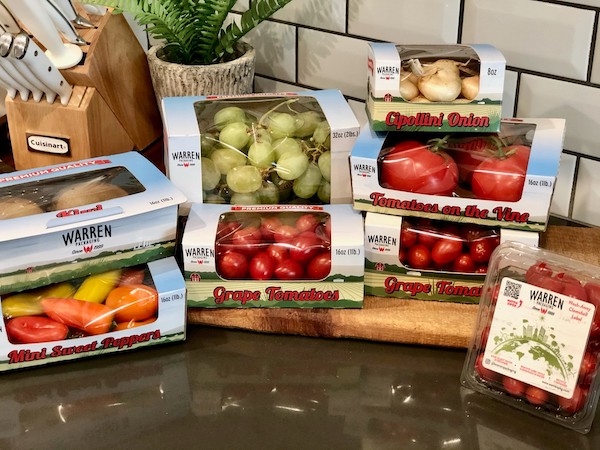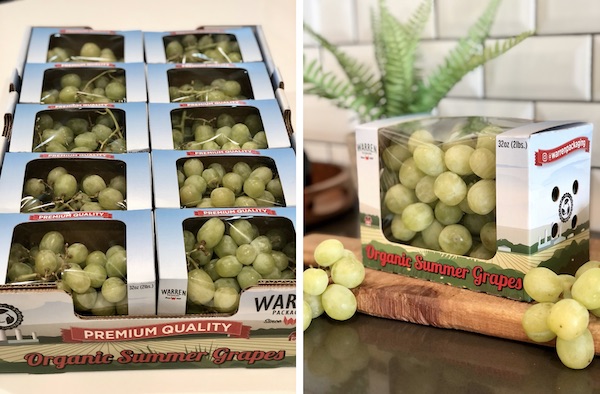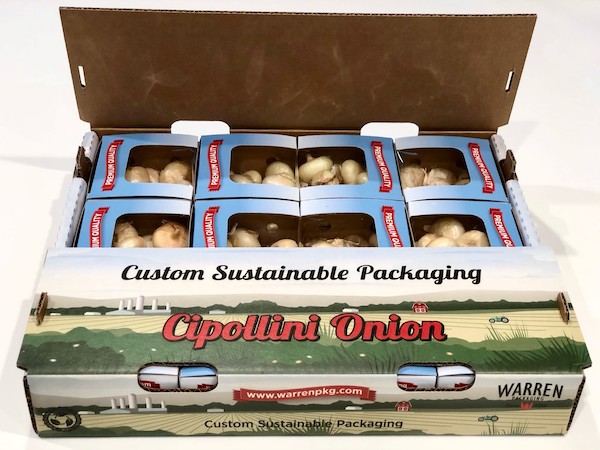As consumers are becoming more environmentally conscious, the demand for sustainable packaging options continues to increase every year. In response to this demand, as well as to reflect their own sustainability values, Warren Packaging has been working on developing a sustainable packaging line. “We have been working on this line for a couple of years,” says Mike Dittenber of Warren Packaging. “We trialed a lot of different designs and ideas, and these turned out to be the most efficient and popular version of the packaging,” he explains.

Customizable, recyclable and biodegradable
The new packaging is made out of paperboard, which is 100% recyclable and biodegradable, with a window made out of cellulose. “The window is very important,” Dittenber shares. “Right from the start of our research we found that visibility is something that consumers really look for. They want to be able to see inside the packaging and make sure that the product looks good. One of our partners came out with this cellulose window material, which is plastic free and biodegradable, and we decided to incorporate that as a window in our design. This really gives us the best of both worlds: visibility and sustainability,” he adds.
Besides the sustainability factor, there is another big positive to the paperboard packaging. Dittenber explains: “Any graphics that the customer wants can be added to the paperboard, and the graphics can cover the entire packaging. The graphics can be used for marketing purposes but also for educational purposes – explaining to the customer how this packaging helps them support the environment, for example. The fact that we can print directly onto the paperboard also means that the customer is using less materials and has less steps in the process, because they don’t have to apply additional materials as they usually do with standard plastic clamshells.”

Flexibility in design
The design of packaging is very versatile, and Warren Packaging is able to fully resize the design to make it fit any product. “We currently have this packaging on retail shelves in a few different styles: a 16 oz grape tomato clamshell, a 1-pound clamshell for tomatoes on the vine as well as a design for onions. Those are the designs that are currently being produced, but we have several other options available for different products as well, so the growers and packers are able to visualize what the end-product will look like – but we can also fully customize and resize it to fit the specific needs of a customer,” Dittenber shares. Warren Packaging is also running the master cases to fit the clamshells into, to be able to provide their customers with a full package deal.
In addition to working with the customer to find the perfect design for their product, Warren Packaging also works with the customer to find the perfect design to fit into their packaging line. “We take care of the design and manufacturing of the packaging and then we send it off to the customer and they pack their products with them. We work with the customer to find the best style to fit into their existing set-up,” says Dittenber.

Demand expands steadily
After finding the perfect design for their sustainable packaging line, Warren Packaging has seen that the demand for the new lineup has been steadily growing since the launch. “When the pandemic hit, we were happy that we decided to go with this closed-concept packaging, rather than some of the open-concept styles we had initially trialed. When the pandemic hit and consumers started to worry about safety in stores, our packaging continued to see steady growth in demand because they offer the same sense of security as the plastic clamshells,” Dittenber says.

For customers who aren’t ready to commit to fully changing their packaging, Warren Packaging also has a sustainable wash-away label available. This option allows customers to make their plastic clamshells more sustainable. “We developed this label with our material supplier for packers and growers still utilizing plastic clamshells. The wash-away label is designed so the consumers can remove the label from the clamshell before recycling so the clamshell can be recycled correctly without the label/adhesive,” Dittenber explains.
“We are seeing a lot of interest and really gaining traction on our sustainable options. It’s the future of clamshells – to transition to more sustainable options and eventually from plastic into paper – and we are happy to be able to offer it to our customers,” he concludes.

 For more information:
For more information:
Mike Dittenber
Warren Packaging
Tel: +1 (909) 923-0613
Email: mike@warrenpkg.com
Instagram: @warrenpackaging
www.warrenpkg.com










